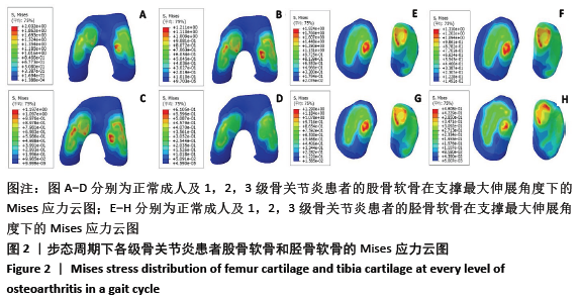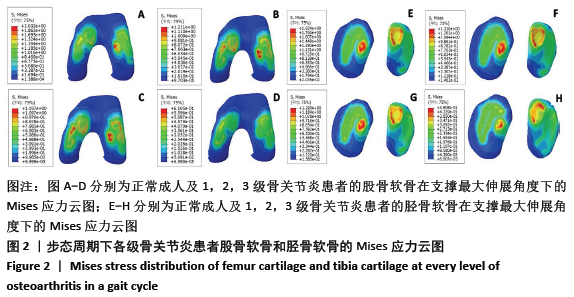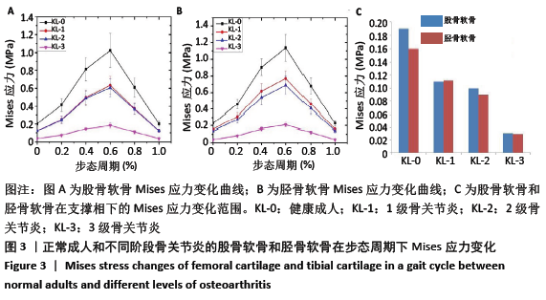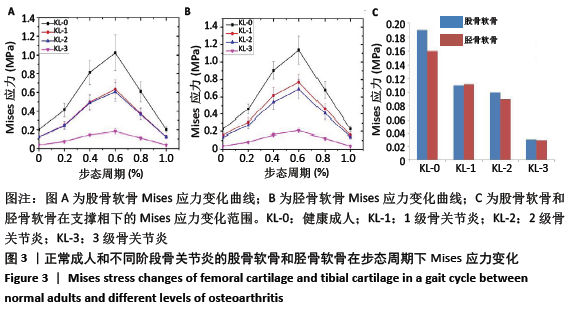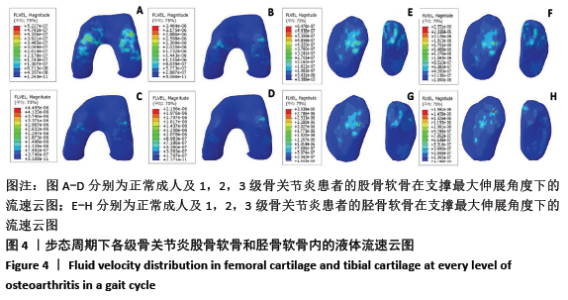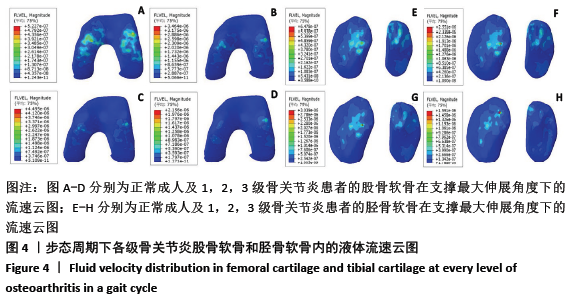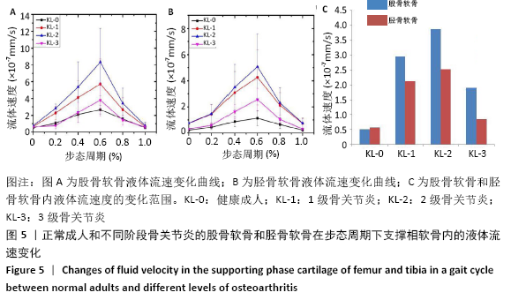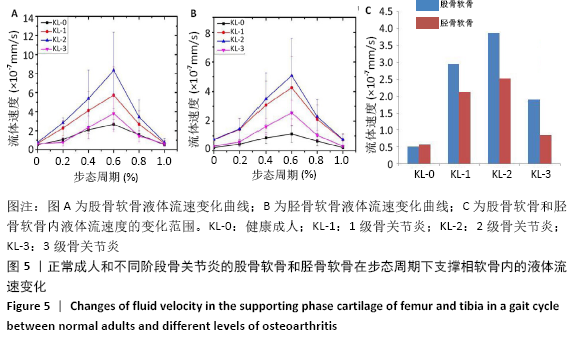[1] Sartori-Cintra AR, Aikawa P, Cintra DEC. Obesity versus osteoarthritis: beyond the mechanical overload. Einstein (Sao Paulo). 2014;12(3):374-379.
[2] VANNINI F, SPALDING T, ANDRIOLO L,et al. Sport and early osteoarthritis: the role of sport in aetiology, progression and treatment of knee osteoarthritis. Knee Surg Sports Traumatol Arthrosc. 2016; 24(6):1786-1796.
[3] 刘豫,周广东,曹谊林.软骨组织工程研究进展—我们的经验与未来展望[J]. Engineering.2017,3(1):28-35.
[4] MIELOCH AA, RICHTER M, TRZECIAK T, et al. Osteoarthritis Severely Decreases the Elasticity and Hardness of Knee Joint Cartilage: A NanoindentationStudy. J Clin Med. 2019;8(11):1865.
[5] CHENG C, TAMBE DT, LINHONG D, et al. Biomechanical properties and mechanobiology of the articular chondrocyte. Am J Physiol Cell Physiol. 2013;305(12):C1202-1208.
[6] 马钢,任明姬.骨性关节炎软骨细胞凋亡的研究[J].中国组织化学与细胞化学杂志,2012,21(2):196-200.
[7] 张春秋,李可,高丽兰,等.软骨组织工程构建中的生物力学[J].力学进展,2018,48(1):410-437
[8] VENÄLÄINEN MS, MONONEN ME, SALO J, et al. Quantitative evaluation of the mechanical risks caused by focal cartilage defects in the knee. Sci Rep. 2016;6:37538.
[9] BRODY LT. Knee osteoarthritis: Clinical connections to articular cartilage structure and function. Phys Ther Sport. 2015;16(4):301-316.
[10] LI LP, BUSCHMANN MD, SHIRAZI-ADL A. A fibril reinforced nonhomogeneous poroelastic model for articular cartilage: inhomogeneous response in unconfined compression. J Biomech. 2000;33(12):1533-1541.
[11] 牛海军,刘诚睿,李昂,等.关节软骨三相力学特性与骨关节炎等级关系研究[J].中国科学:生命科学,2012,42(7):572-578.
[12] 牛海军,王月香,樊瑜波.不同病理学等级关节炎软骨的三相力学特性[J].医用生物力学,2012,27(3):276-281.
[13] BRANDON SC, DELUZIO KJ.Robust features of knee osteoarthritis in joint moments are independent of reference frame selection.Clin Biomech (Bristol, Avon). 2011;26(1):65-70.
[14] MÜNDERMANN A, DYRBY CO, ANDRIACCHI TP.Secondary gait changes in patients with medial compartment knee osteoar-thritis: increased load at the ankle, knee, and hip during walking. Arthritis Rheum. 2005;52(9):2835-2844.
[15] Qiu L, Xuemei MA, Gao L, et al. Analysis of the mechani calstate of the human knee joint with defect cartilagein standing. J Mech Med Biol. 2016;16(8):810-826.
[16] LI L, YANG LF, ZHANG KJ, et al.Three-dimensional finite-element analysis of aggravating medial meniscus tears on knee osteoarthritis. J Orthop Translat. 2019;20:47-55.
[17] LI G, LOPEZ O, RUBASH H.Variability of a three-dimensional finite element model constructed usingmagnetic resonance images of a knee for joint contact stress analysis.J Biomech Eng. 2001;123(4):341-346.
[18] LEROUX MA, SETTON LA. Experimental and biphasic FEM determinations of the materialproperties and hydraulic permeability of the meniscus in tension. J Biomech Eng. 2002;124(3):315-321.
[19] Prendergast PJ, van Driel WD, Kuiper JH.A comparison of finite element codes for the solution of biphasic poroelasticproblems. Proc Inst Mech Eng H. 1996;210(2):131-136.
[20] 吴军成,霍然,吕仁荣.软骨组织工程中支架材料的文献回顾[J].中国组织工程研究,2012,16(3):522-526.
[21] 陈文栋,杨光.膝关节半月板三维有限元模型的动态仿真生物力学分析[J].中国组织工程研究,2016,20(31):4658-4664.
[22] 胡雪艳,恽晓平,郭忠武,等.正常成人步态特征研究[J].中国康复理论与实践,2006,12(10):855-857+921.
[23] 黄萍,钟慧敏,陈博,等.正常青年人三维步态:时空及运动学和运动力学参数分析[J].中国组织工程研究,2015,19(24):3882-3888.
[24] 钱竞光,宋雅伟,叶强,等.步行动作的生物力学原理及其步态分析[J].南京体育学院学报(自然科学版),2006,5(4):1-7+39.
[25] 王世雷. 压缩载荷下全膝关节软骨缺损和修复力学行为的实验研究及仿真分析[D].天津:天津理工大学,2019.
[26] AKPINAR B, THORHAUER E, TASHMAN S, et al. Tibiofemoral cartilage contact differences between level walking and downhill running. Orthop J Sports Med. 2019;7(4):2325967119836164.
[27] Mononen ME, Julkunen P, Töyräs J, et al.Alterations in structure and properties of collagen network of osteoarthritic and repaired cartilage modify knee joint stresses. Biomech Model Mechanobiol 2011;10(3):357-369.
[28] 娄思权.骨关节炎的病理与发病因素[J].中华骨科杂志,1996, 16(1):57-60.
[29] CARAMES B, LOPEZ-ARMADA MJ, CILLERO-PASTOR B, et al. Differential effects of tumor necrosis factor-α and interleukin-1β on cell death in human articular chondrocytes. Osteoarthritis Cartilage. 2008;16(6): 715-722.
[30] BIELEMAN HJ, VAN ITTERSUM MW, GROOTHOFF JW, et al. Functional capacity of people with early osteoarthritis: a comparison between subjects from the cohort hip and cohort knee (CHECK) and healthy ageing workers. Int Arch Occup Environ Health. 2010;83(8):913-921.
[31] BOYD LM, RICHARDSON WJ, ALLEN KD, et al.Early-onset degeneration of the intervertebral disc and vertebral end plate in mice deficient in type IX collagen. Arthritis Rheum. 2008;58(1):164-171.
[32] DEYLE GD, HENDERSON NE, MATEKEL RL, et al. Effectiveness of Manual Physical Therapy and Exercise in Osteoarthritis of the Knee A Randomized, Controlled Trial. Ann Inter Med. 2000;132(3):173-181.
[33] BRICCA A, STRUGLICS A, LARSSON S, et al. Impact of Exercise Therapy on Molecular Biomarkers Related to Cartilage and Inflammation in Individuals at Risk of, or With Established, Knee Osteoarthritis: A Systematic Review and Meta-Analysis of Randomized Controlled Trials. Arthritis Care Res (Hoboken). 2019;71 (11):1504-1515.
|
